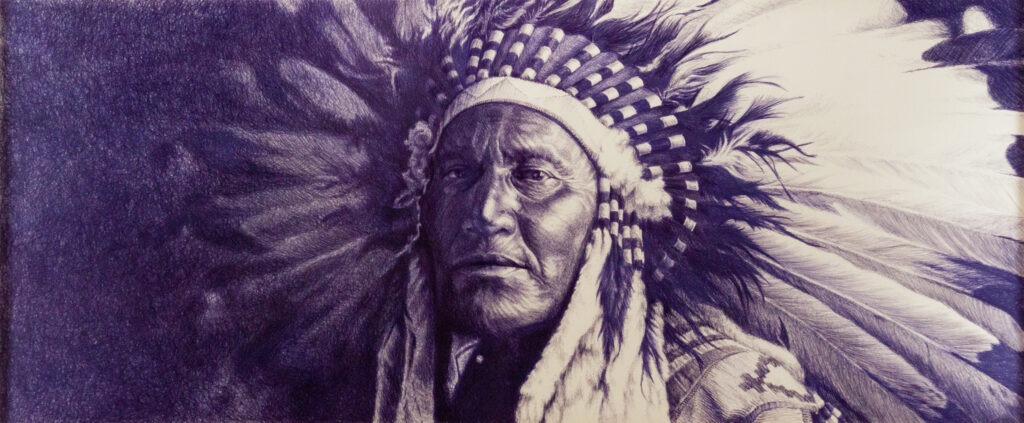The American Revolution stands as a crucial juncture in the United States’ past, often portrayed as a quest for freedom and autonomy. Yet, this portrayal tends to brush aside the viewpoints of Native American tribes and the challenges they faced during this era. The impact of the American Revolution on these tribes was profound, as it directly affected their lands and way of life. This essay endeavors to shed light on an overlooked perspective by delving into the American Revolution from the vantage point of Native Americans. Through this exploration, we hope to humanize history by presenting a more holistic view of this time, allowing us to better grasp the intricate dynamics that unfolded amidst the struggle for independence.
The Causes of the American Revolution
The American Revolution was fueled by a mix of political, economic, and ideological factors that stirred a yearning for independence and self-governance. Primarily, the colonists found themselves increasingly dissatisfied with British rule, feeling that their rights as Englishmen were being infringed upon. They were subject to laws and taxes without a rightful representation in the distant British government, intensifying their sense of injustice.
Economically, the burdensome taxes and trade regulations imposed by the British, like the Stamp Act and the Townshend Acts, weighed heavily on the colonies, hampering their economic growth and prosperity. This created significant resentment among the colonists, adding to their grievances.
Moreover, the colonists were influenced by Enlightenment ideals and the belief in natural rights. They embraced the concept of inherent rights and liberties for every individual, further fueling their determination to break free from British rule and chart their own course.
In essence, the American Revolution was driven by a fusion of these political, economic, and ideological factors, representing the collective will of the colonists to assert their freedom and govern themselves.
Native American Perspectives on the American Revolution
The Native American perspective during the American Revolution was a rich tapestry of viewpoints and experiences. Different tribes held diverse opinions about the unfolding conflict. For some Native American communities, the American colonists presented a potential alliance against the British, while others were cautious about aligning themselves with either faction.
Take, for instance, the Iroquois Confederacy. It grappled with divided loyalties during the war. Some of its tribes leaned towards supporting the British, while others leaned towards supporting the colonists. The Oneida and Tuscarora tribes, in contrast, largely stood by the colonists, viewing this as an opportunity to reclaim their ancestral lands lost due to British expansion.
On the flip side, the Cherokee and Creek tribes viewed the colonists as a threat. They formed alliances with the British, hoping that this partnership would help them preserve their autonomy and safeguard their territories. It’s crucial to honor and acknowledge the diverse perspectives of Native Americans during this period, as their decisions and actions profoundly influenced the ultimate outcome of the American Revolution.
Native American Involvement in the American Revolution
The Native American participation in the American Revolution was a rich and intricate aspect, frequently downplayed or overlooked in historical accounts. Contrary to common misconceptions, various Native American tribes actively engaged in the conflict, aligning themselves with either the British or American forces based on diverse motivations. Some tribes aimed to uphold alliances with the British, who pledged to respect their lands and sovereignty. On the other hand, some saw an opportunity to regain lost territory by supporting the American rebels.
Native American warriors, including groups like the Oneida, Tuscarora, and Catawba, fought alongside American soldiers in crucial battles like Saratoga and Yorktown. Conversely, tribes such as the Mohawk, Seneca, and Shawnee joined forces with the British. These Native American fighters brought their profound knowledge of the land and unique guerrilla warfare tactics, profoundly impacting the war’s course. Their contributions were significant, yet Native Americans found themselves entangled in the struggle between European powers. Sadly, their involvement often resulted in further loss of lands and autonomy for their tribes.
Native American Alliances and Strategies during the American Revolution
The Native American tribes were pivotal actors in the American Revolution, showcasing their diverse motivations and strategies. Amidst this complexity, various tribes found a chance to affirm their sovereignty and safeguard their lands by aligning with either the British or American forces. The British were well aware of the potential military strength and extensive knowledge of the land that the Native American population possessed, and they sought to harness these alliances to solidify their grip on North America. In contrast, Native American tribes viewed the conflict as an opportunity to stand up for their self-rule and resist encroachments on their territories.
Some tribes, like the Iroquois Confederacy, initially sided with the British, while others such as the Oneida and Tuscarora aligned with the American colonies. Nevertheless, the Native American involvement in the war went beyond choosing sides. Many tribes pursued their own distinct strategies, employing guerrilla warfare tactics and raiding settlements along the frontier, regardless of their initial allegiances. These alliances and strategies adopted by Native American tribes during the American Revolution underscore their capacity to act independently and their unwavering commitment to safeguard their sovereignty and lands amidst the tumultuous backdrop of the Revolutionary era.
Considering the American Revolution from a Native American perspective sheds light on a lesser-known aspect of this crucial moment in history. The Native tribes found themselves caught in the midst of conflicts among European powers and their colonial ambitions, often being pressured to take sides or risk losing their lands and way of life. Some tribes sided with the British, viewing them as potential allies against American encroachment, while others aligned with the colonists in the hopes of safeguarding their rights and gaining recognition.
Ultimately, the American Revolution brought about significant changes in Native American communities, resulting in devastating consequences for their sovereignty and self-governance. It’s important to acknowledge and honor their struggles and contributions during this time, integrating their voices into the broader narrative of American history. By doing so, we can attain a more humanized understanding of the Native American experience during the American Revolution, enriching our grasp of the intricate and diverse dynamics of this transformative era in our nation’s past.
Bibliography
Originally posted 2023-09-28 18:56:58.

